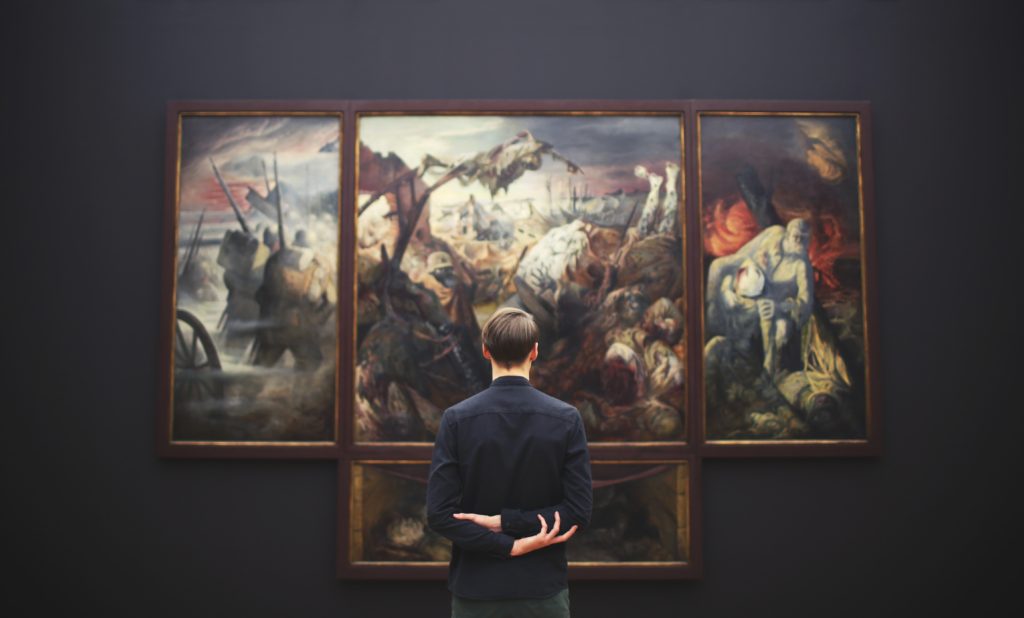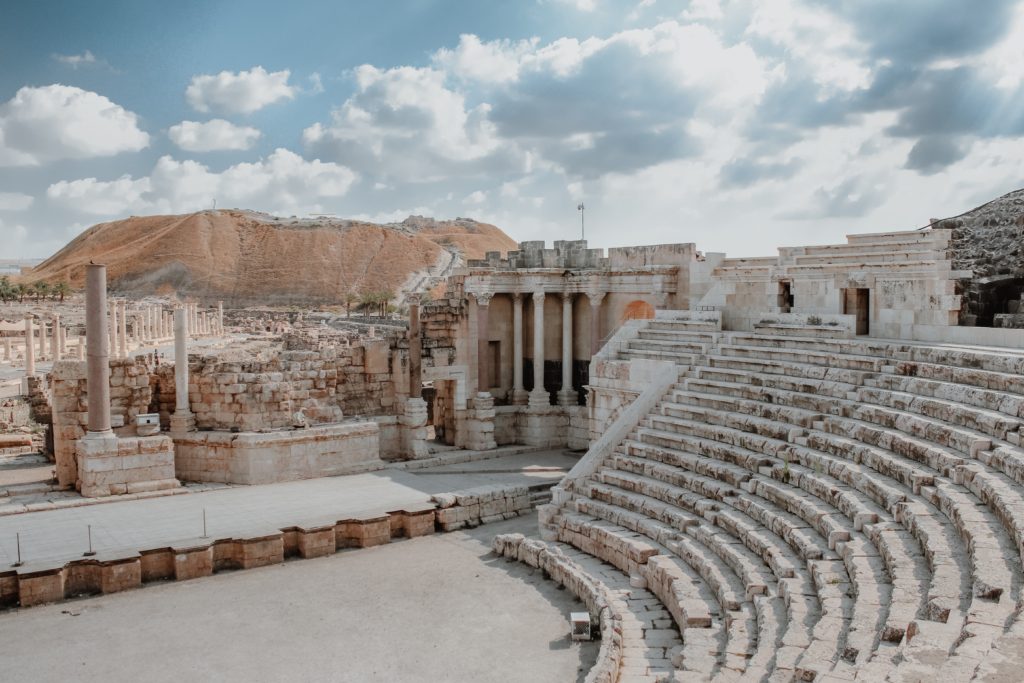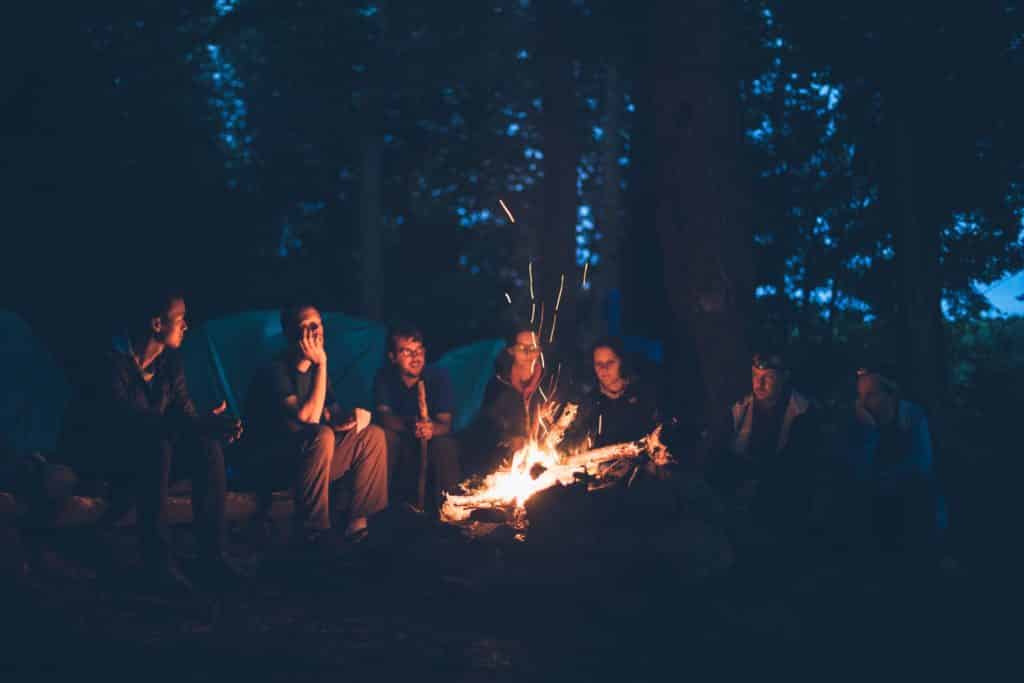A Brief History of Storytelling: How Long Has It Existed?
We know that historically, storytelling has been an active part of human life for thousands of years. Though we cannot pinpoint a start date to know how long precisely storytelling has existed, we can follow part of its evolution through history.
We can piece moments together by working through the various mediums humans have tailored in order to suit our evolution. “It is the distinctive ability to believe in stories that separate sapiens from other creatures,” says Yuva Noah Harari in his book Sapiens, writing that “You could never convince a monkey to give you a banana by promising him limitless bananas after death in monkey heaven.” And so, storytelling has managed to be a constant pillar in our societies and has fundamentally allowed us to mold our perception between right and wrong.
Storytelling can be found scattered in most human societies, popping up as myths, legends, or most commonly religion, and seems to be something that we binge and crave. “Tell me a story” is not just what young children say, but seems to be a mantra that we play on repeat in our daily lives.
It is this continuous human desire to be entertained that has allowed the storytelling methods to evolve from visual to oral to written and most recently to digital storytelling.
History of Visual Storytelling – Over 36 000 Years

If a picture really is worth a thousand words then we have created enough stories throughout history to keep us entertained forever.
The historical background of visual storytelling can be pinpointed back to around 36 000 years. Early records of art depicting everyday images were discovered in the Chauvet caves in southern France demonstrating man’s ability to reflect or pre-empt events.
Visual storytelling has kept evolving and become a staple in human civilization. Art has been a medium allowing humans to pass on history and legends through images. Historical examples of visual storytelling have been found in Egyptian pyramids, on ancient Greek vases and frescoes, Chinese tapestries, statues, canvases, through photographs, and most recently made accessible through video.
Film and photography are the most recent evolution of visual storytelling, an ever-adapting art form we have been able to use to enhance our entertainment value. The concept of a selfie has revolutionised the way that people can communicate through telling a story and these mediums have developed our creative minds, and most recently with video platforms such as Netflix have allowed stories to be only a click away.
If a picture really is worth a thousand words then we have created enough stories throughout history to keep us entertained forever.
History of Oral Storytelling – Over 50,000 Years

The Greeks were master storytellers and introduced the world to the protagonist, antagonist, and chorus.
Though a specific birth date cannot be given to oral storytelling, it is believed to be one of the oldest forms, originating with the birth of speech estimated at 50000 to 2 million years ago (not very precise I know). It definitely still is one of the most popular forms of storytelling. It has traditionally kept its formula and is still consciously injected into our daily lives. The need for humans to connect and to understand each other is satiated with oral storytelling.
Historically, the most well-renowned and longest-standing storytellers are the aboriginal Australians, whose storytelling rituals are believed to date back between 18000 and 7000 years. Their storytelling methods describe Dreamtime; the explanation of how the world came to be. Still, due to the Aboriginal’s specific rules on how each story could be told and passed down generation to generation, we cannot know for sure what has been lost and what changed, but we do know that their use of voice and dramatization was essential in delivering the story.
Fundamentals when telling stories are the use of pace, pause, comedy and drama, and these dramatic flairs have allowed storytelling to be propelled from small and intimate late-night fireside affairs to dramatic Greek tragedies aimed at allowing audiences to undergo catharsis. The Greeks were master storytellers and introduced the world to the protagonist, antagonist, and chorus. This structure can still be copied and seen in modern theatre, notably the 1.7 billion dollar Broadway industry.
Oral storytelling is still commonly practiced and highly appreciated. We have managed to keep our 21st-century lives injected with constant doses of it, and even though occasions, where people congregate around a fire, are rare, we still have constant access to stories in intimate settings. We access them through modern podcasts such as The Moth, millions of YouTube videos binged daily, or even just when friends ‘spill the tea’ and share a cup of steaming hot gossip. Being a good orator and storyteller has become such a necessity that it makes a very constant appearance in our politics. People have even turned to their political leaders to bring a sense of drama into our everyday policies and is seen, as recently elected politicians to seem to turn to entertaining their audiences with stories in order to gain credibility.
History of Written Storytelling – Around 3,400 Years

Writing is infallible, or so it is believed to be, and mixed with its ability to telling history it is a medium that has allowed stories to retain more weight.
The earliest examples of human writing come from the Sumerians and Egyptians with their hieroglyphics, estimated to date back 3400 years. Writing changed the course of storytelling, giving it a new avenue to explore and a way of ensuring permanence. This permanence was a game-changer in terms of retaining historical data and finally giving humans the possibility of being immortalized.
When tales are only spread via word of mouth there is a huge amount of room for polluting or embellishing the story. The act of setting something in stone adds an air of credibility and has made it trickier to dispute. The earlier creative license around enhancing storytelling is no longer applicable when it is written.
Writing is infallible, or so it is believed to be, and mixed with its ability to telling history it is a medium that has allowed stories to retain more weight.
Written storytelling, in its beginning, was an elitist art that required literacy. Historically, education was far from common amongst the average person, so it has placed particular importance on the wealthy and essentially gave added power to the educated. The way we consume written storytelling massively shifted with the invention of the printing press in 1440 and the first newspaper printed in 1690. Little by little, written stories became more accessible to the average person, particularly as of the last hundred years when literacy rates increased rapidly. We have since added more and more literature to our archives and are bombarded with novels, scholarly journals, news articles, constant family WhatsApp’s, and millions of emails daily. Fundamentally, written storytelling has become indispensable within our modern societies.
History of Digital Storytelling – Around 70 Years

Storytelling has evolved and this shift has increased how interactive and accessible the experience can be.
The most recent and fast-evolving form of storytelling is digital storytelling, first developed with the invention of individual computers in 1948. Digital storytelling is simply using a digital medium in order to tell a story. It can combine still image, moving image, sound, text, and essentially enriches the experience for the viewer.
Storytelling has evolved and this shift has increased how interactive and accessible the medium can be. Digital storytelling is used in sales, advertising, entertainment, and is now a crucial tool in education. As a format, it has allowed the human contact and the knowledge to be brought directly to a screen near you. It is both the comfort and the enjoyment all at once, an undeniably powerful combination.
Recently social media has revolutionised how our societies function and demonstrates clearly what we look for in entertainment. Stories on social media platforms are often short, between 10 to 60 seconds, and disappear after a mere 24 hours, leaving the concept of permanence behind. Social media is the new way of presenting quick, comedic, and efficient stories. It is all about capturing our audience’s attention as quickly as possible and is a vital tool for 21st-century companies. Even on a personal level, individuals through digital storytelling can craft their own identity. This digital façade has allowed humans to design the narratives they wish to tell the world and is a carefully curated new form of presenting our own stories.
The most unknown branch of digital storytelling to me is the use of it in video games. It seems that we haven’t even touched upon how the new technologies will allow digital storytelling to further be explored. We already use virtual reality in our games, a concept unthought of over 50 years ago, so can we expect a couple of terrifying ‘Black Mirror’ episodes to predict the future of games? Will we be further thrust into the narrative in order to feel the story to a physical extent? I’m not illiterate with technology but I still struggle with simple Tik Toks so I’m not quite sure how well adapted I am for what shall be coming next in digital media. Who knows what the next platform will be and how we will keep adapting our methods in order to keep ourselves entertained, but whatever comes our way, I’m looking forward to it and seeing how it can enhance our storytelling experiences.
So, How Long Has Storytelling Existed?
Storytelling, therefore, dates back over 50000 years, and as we have seen it mature branching out into new mediums.
As a species, we have demonstrated there is an everlasting need to be told stories, Lisa Cron said in Wired for Story, “Story, as it turns out, was crucial to our evolution — more so than opposable thumbs. Opposable thumbs let us hang on; story told us what to hang on to.”
We all want to work to a common goal and stories have given us just that possibility. I don’t believe that the way social media’s short and quick story format will replace the beauty of a lengthy and well-told story. I think we crave human contact too much to give that up. However, I do think it has created new avenues for us to be able to explore. I expect the trend of quick snippet videos is not about to stop here and I can’t wait to see what new and fascinating methods we humans concoct in order to enhance our storytelling experiences.
If you’re interested in booking a storytelling workshop to improve your skills as an oral storyteller, have a look at my workshops here.

Sources of Inspiration for This Blog Post
- The Cultural Evolution of Storytelling and Fairy Tales: Human Communication and Memetics
- Human Language May Have Evolved to Help Our Ancestors Make Tools
- Evolution of Storytelling
- Gross Revenue of Broadway Shows in New York from 2006 to 2019
- Revealed: How Indigenous Australian Storytelling Accurately Records Sea Level Rises 7,000 Years Ago
